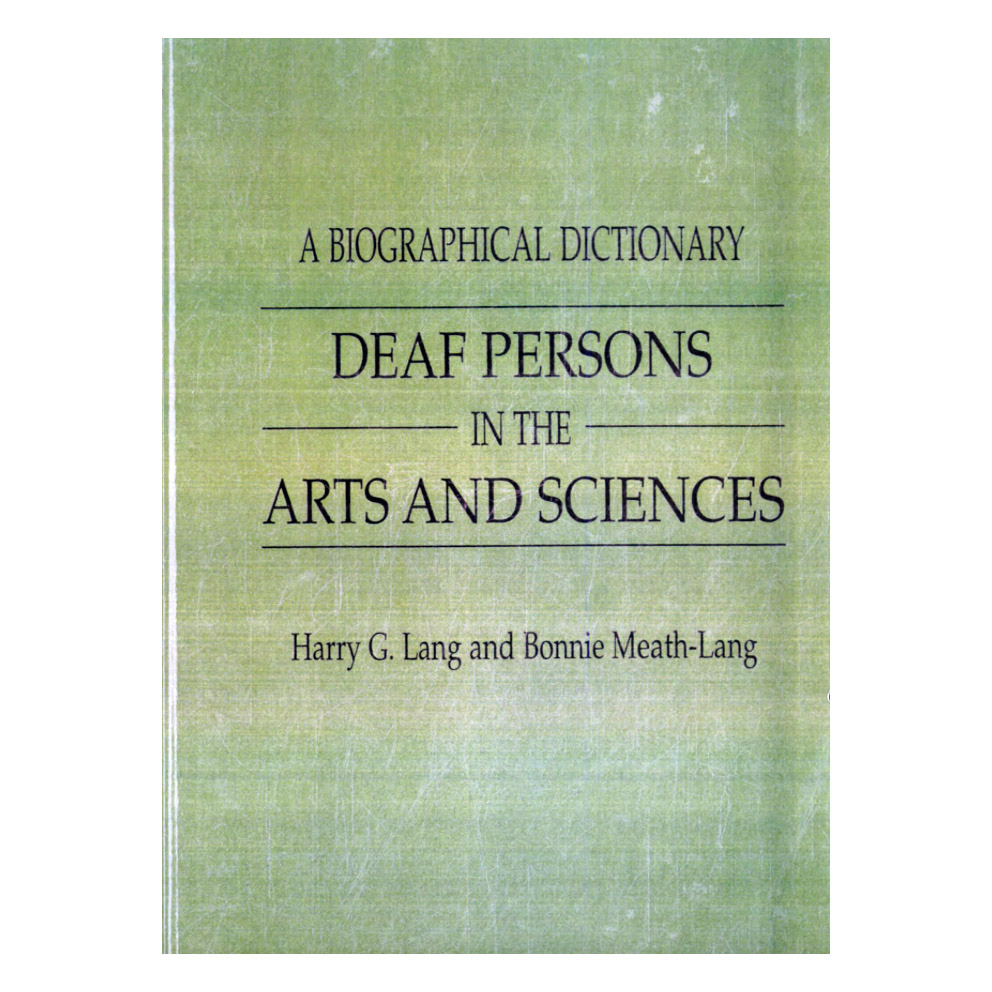Deaf Persons in the Arts and Sciences: A Biographical Dictionary
By Harry G. Lang, Bonnie Meath-Lang
ANTONIO GÓMEZ FEU (1907- 1984), Spanish Artist.
Antonio Gómez Feu Morales was born in the Andalusian region near Ayamonte,
Spain, on November 27, 1907. Born deaf, his protective family and friends kept him at home for some time, where his early predisposition to create art became obvious very quickly. The bright child drew picture upon picture in order to communicate with and engage those around him. He also observed and absorbed the customs and colors of Andalusian life, and these effects would emerge in much of his later work. The absorption of the visual elements of culture in general and Spanish cultures in particular began in these formative years.
When he was nine years old, the decision was made that young Antonio would go to Valencia, where the School for the Deaf and Blind was established.
His rapid progress in sign, spoken, and written language development put to rest any concerns for his late start Throughout his life, Gómez Feu’s extraordinary communication abilities were noted by patrons, clients, and interviewers.
He was offered professorships and was routinely requested to do lecture demonstrations.
In 1926, Gómez Feu enrolled in Valencia’s San Carlos Academy of Fine Arts. There, he began to work in a greater variety of media. In addition to drawings in crayon and charcoal, he began to do water colors and oil paintings in earnest.
In 1931, he moved to Madrid, where he attended the San Fernando Academy of the Fine Arts, where he was able to experiment with new techniques and to study illustration in greater depth. In Madrid, he also received licensure as a professor of art.
He left Spain at the height of the Spanish Civil War. Having his childhood
home and family ties in Huelva, on the border of Portugal, Gómez Feu decided
to go to Lisbon for a time to work. He was able to find substantial experience
designing, illustrating, and doing layout for several magazines and poster companies.
He also took the opportunity to study part time in Lisbon. He received commissions to do some portraits, and he began to direct more energy toward
portrait painting, particularly after he received first prize for his portraiture in a
major exhibition. Gómez Feu received considerable attention at this time. He
was also offered a professorship in Lisbon, but a condition of the contract was
renunciation of Spanish citizenship. This forced a re-evaluation of his situation,
and, with the civil war over, Gómez Feu decided to return home in 1943. He was offered a teaching position in Seville at the School of Fine Arts. The School gave him access to gallery space, and he held a one-man show there in 1944. After other exhibits across Spain, he decided to settle in Barcelona, with its attractions of great natural beauty and a vibrant art community. He mounted more exhibitions and received portrait commissions from military and business Ieaders, several well-known Spanish actors, and his fellow painter, Segrelles.
Gómez Feu’s portraits are viewed by many critics as genuinely psychological.
In interviews with reporters, be described his colleague Segrelles as “genial,”
but the portrait of his fellow painter also reveals, through line and angle, a formidable gentleman. Such complex and sometimes contradictory impressions made Gómez Feu very popular and much in demand.
He was comfortable with the realism portraiture allows, but Gómez Feu also
produced colorful and light-dappled landscapes and still life drawings. He was
influenced by impressionist work, but he enjoyed experimenting with unconventional and contrastive composition, angles of vision, and light. He drew on his early experience in Andalusia for the colorings of these works.
Gómez Feu also remained true to his initial experiences as a professional illustrator. He executed a series of drawings depicting Cervantes’ story of Don
Quixote, now in the Museum of Denia, Alicante, and a number of fantasy works.
Between 1953 and 1956, he produced forty drawings to document an ancient
Catalan section of Barcelona that was razed. These are on permanent exhibition
at Barcelona’s Municipal Museum.
Throughout his career, Gómez Feu was an accessible and open artist, who
freely expressed his preference for classical forms and romantic themes. He
characterized himself as a realist but pushed realism to its limits with the element of surprise and the innovative application of impeccable technique.
Gómez Feu died on his seventy-seventh birthday, November 27, 1984.
References
Ayamonte prepara un homenaje con una gran exposicion antologica a su pintor Antonio
Gómez Feu. (1980, July 1). Odiel.
Loe, E. F. (1987). Antonio Gómez Feu. In J. V. Van Cleve (Ed.), Gallaudet encyclopedia of deaf people and deafness (Vol. I, pp. 471-472). New York: McGraw-Hill.
Marin, B. (undated). Gómez Feu, el pintor de Ia luz. Arte, 3-4. Gallaudet University Archives.

